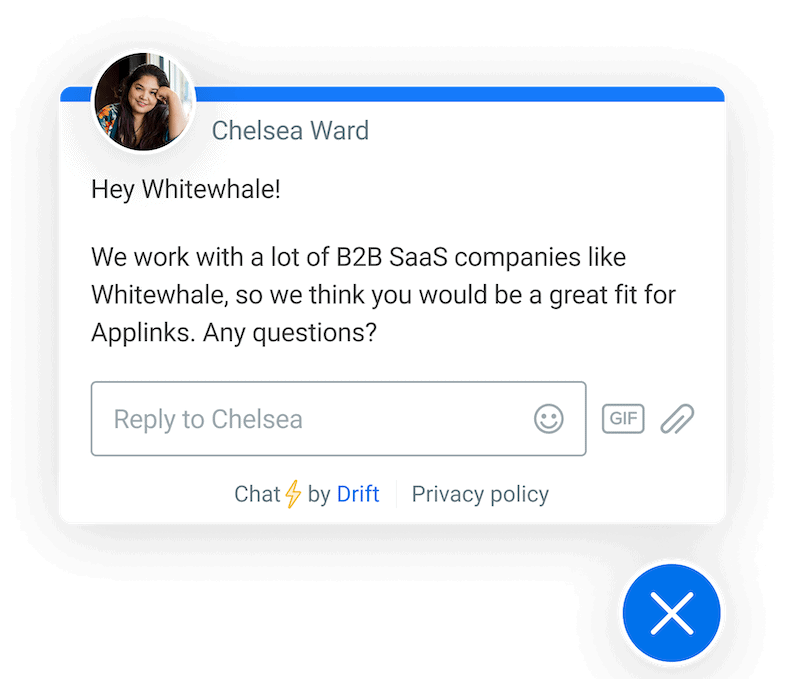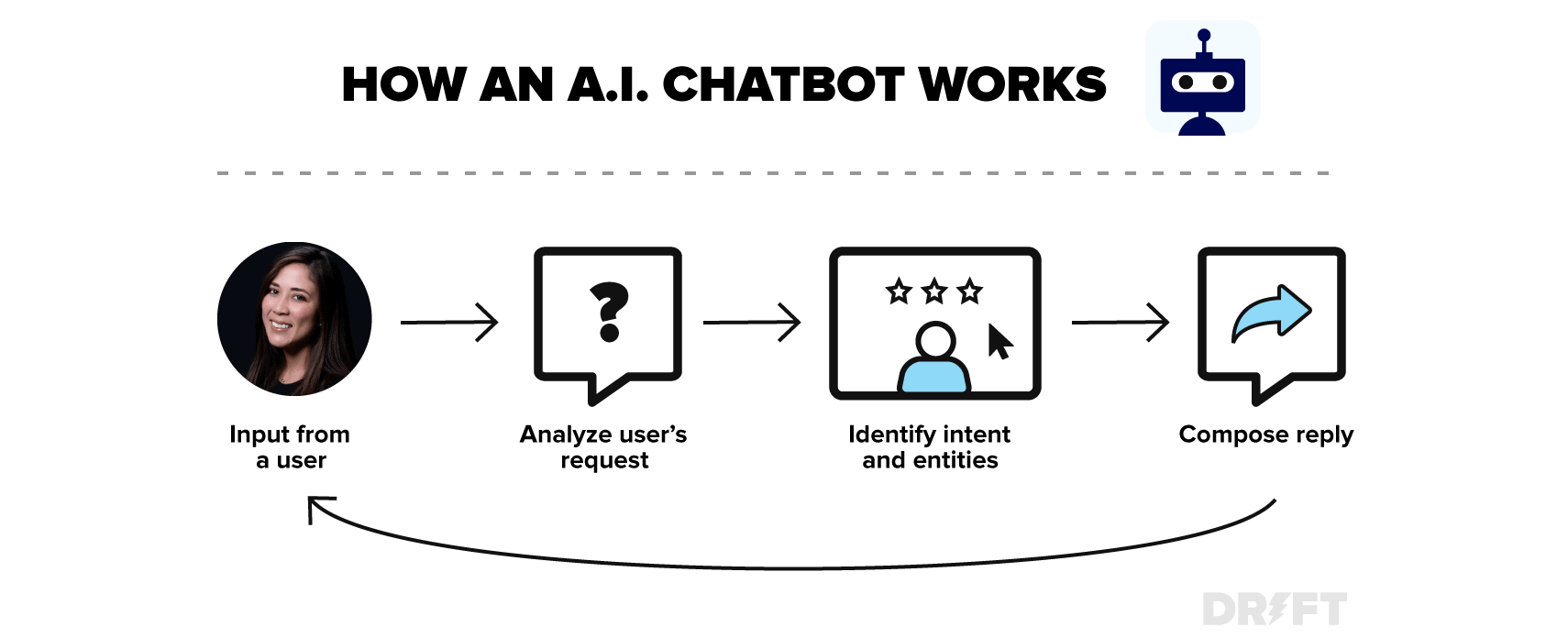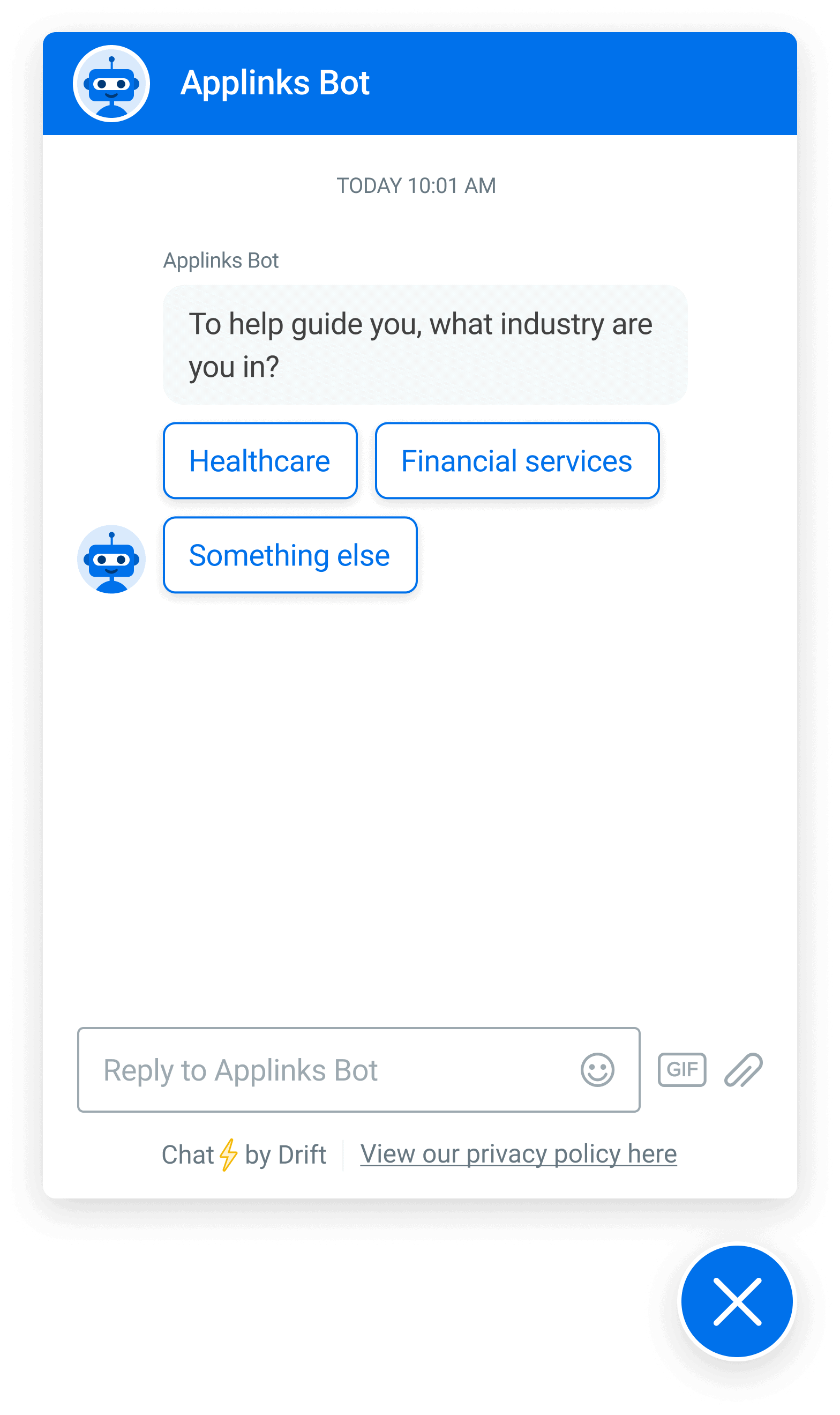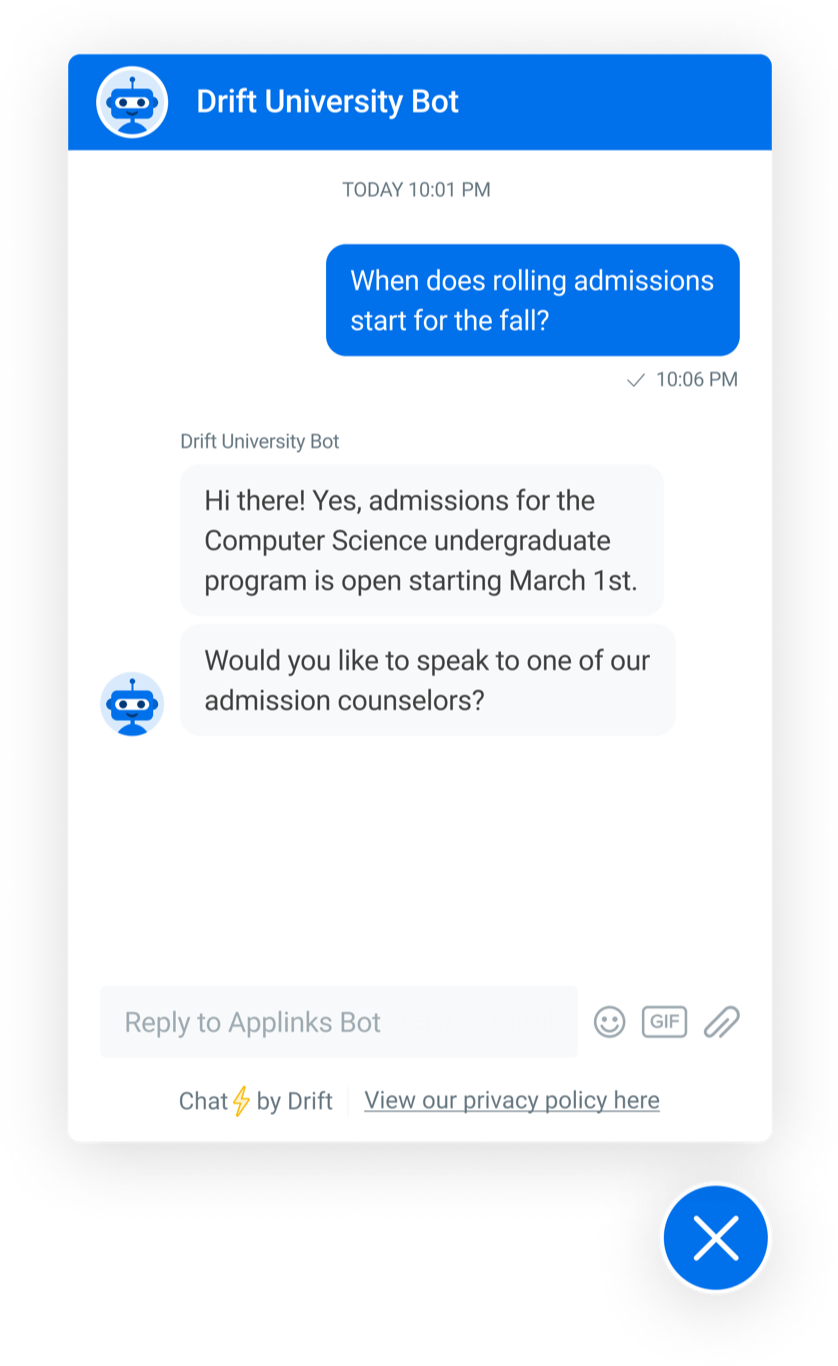Artificial intelligence (AI) chatbots are a fascinating advancement in today’s digital technology landscape. They can do it all — whether it’s helping you order a pizza, answering specific questions, or guiding you through a complex B2B sales process.
With all the things that artificial intelligence chatbots can do, there are times when they almost seem like magic. And that makes AI chatbots a source of confusion (and sometimes fear) for the people who encounter them.
But the truth is AI chatbots are simply a tool that you can use to level up your digital experience. Albeit, a powerful one.
So, you might be wondering, what exactly are AI chatbots? How do they work? And when should you be using them to level up your business conversations?
We answer all those questions (and more) in this introductory guide to AI chatbots.
What is an AI Chatbot?
Artificial intelligence chatbots are chatbots trained to have human-like conversations using a process known as natural language processing (NLP). With NLP, the AI chatbot is able to interpret human language as it is written, which enables them to operate more or less on their own.
In other words, AI chatbot software can understand language outside of pre-programmed commands and provide a response based on existing data. This allows site visitors to lead the conversation, voicing their intent in their own words.

What’s more, AI chatbots are constantly learning from their conversations — so, over time, they can adapt their responses to different patterns and new situations. This means they can be applied to a wide range of uses, such as analyzing a customer’s feelings or making predictions about what a site visitor is looking for on your website.
How an AI Chatbot Works
Today, one of the biggest roadblocks to AI adoption is that nearly half of all marketers consider themselves AI beginners. But the truth is you don’t need to have a PhD in NLP (or even be a programmer) to set up an AI chatbot.
All you need is a good AI chatbot software and a basic understanding of how an AI chatbot operates. Here’s a quick rundown 👇

At the base level, an AI chatbot is fed input data which it interprets and translates into a relevant output. So, if a site visitor asks a question, the AI chatbot will analyze their intent, as well as other factors like tone and sentiment, and then attempt to deliver the best possible answer.
To do this, the AI chatbot needs access to tons of conversational data. That’s why AI chatbots have to go through a training period where a programmer teaches it how to understand the context of a person’s words. It’s this understanding which allows the chatbot to answer complex queries in a natural, conversational way.
If the idea of training an AI chatbot is sounding off alarm bells for you, don’t worry. Drift’s Conversational AI, for example, is pre-trained on over six-billion conversations, as well as topics specific to your company, making it available out-of-the-box. Through the AI Topic Library, you can customize responses to common topics, adding and generating examples for those topics, and even creating new custom topics. Plus, with Drift’s GPT integration, you can automatically generate topic examples so that you can save time while training your chatbot, which means going live with AI even faster.
Now that you know the basics of how an AI chatbot works, with the right software in place, you can create a conversational experience that delivers the right information to your site visitors at the right time. To learn more, check out our resource on how to design AI chatbots.
Which Is Better — AI Chatbots or Rule-based Chatbots?
When choosing between AI chatbots and more traditional rule-based chatbots, your decision will ultimately come down to your use case — because different types of chatbots serve different needs.
Rule-based chatbots are automated, following rules established in advance. In other words, they stick to the script.

While they’re not as flexible as their AI counterparts, rule-based chatbots do have their advantages. If you want to create a predictable, controlled experience, rule-based chatbots allow you to guide your audience towards specific goals — be it speaking to a human, downloading a piece of content, or signing up for a demo.
However, rule-based chatbots are not programmed to respond to changes in language. If a visitor arrives on the website and asks something you didn’t set up a response for, the chatbot won’t be able to produce an answer.
On the other hand, an AI chatbot can have more flexible, human-like conversations. It can learn a lot more about your site visitors and apply that knowledge effectively with little intervention. This also gives your sales reps a wealth of information about your buyers so that they can better personalize their own conversations.

So, if you are looking for a chatbot that can handle complex queries or help you make sense of massive datasets, AI chatbots are a better choice. Some frequent use cases include:
- Sentiment analysis: Combing through massive data sets to identify customer complaints, reviews, and mentions across multiple touchpoints.
- Understanding behavioral patterns: Helping identify patterns that a human might not have detected.
- Learning and adapting to user preferences: Creating a personalized experience for your site visitors, such as saving preferences, mirroring language, or delivering customized content.
Our recommendation? You may want to opt for a chatbot platform that has both AI chatbots and rule-based chatbots so you can have the best of both worlds. For example, you might use a rule-based chatbot on your home page to quickly qualify your site visitors. Meanwhile, you might use an AI chatbot on a more high-intent page like a pricing page to answer a buyer’s specific questions.
And, to ensure you’re delivering the best possible experience, you’ll also want to make sure you find an AI chatbot platform that comes with the ability to understand tone, sentiment, and social cues.
If you’re looking to make your search a little bit easier, we’ve got you covered. Drift’s chatbot software offers both rule-based and AI-powered chatbots so you can tailor each chat experience to your specific needs. Get a demo today.
AI Chatbot FAQs
As all good researchers know, asking questions is a big part of the decision-making process.
Whether you’re designing a robust chat strategy or simply want to use chatbots as an extra channel for your buyers, here are a few questions to consider before getting started with AI chatbots:
Does It Connect with My Existing Tech Stack?
One of the key advantages of AI chatbots is that they can quickly review data and make decisions based on their analysis. And AI chatbots do this most effectively when they’re fully integrated with your tech stack.
If you’re planning to use your AI chatbot to gather insights, you’ll want to pick a program that syncs up with your customer relationship management (CRM) software, marketing tools, email service provider, and so on to get the best results.
With Drift Integrations, you can easily connect your AI chatbots to your existing tech stack through dozens of native integrations, like Salesforce, HubSpot, Marketo, and Office 365.
Is the AI Chatbot Pre-Trained?
The best AI chatbots are built on an existing data set. But, you’ll want to make sure you select a solution that comes with some understanding of terms and knowledge specific to your industry. A general chatbot AI might not be ready “out-of-the-box,” so you’ll want to account for the amount of time required to get your bot trained for the job.
Drift’s Conversational AI has been trained on over six billion conversations and counting, which means you don’t have to spend time training it yourself. This makes it easy for you to focus on leads and customers, instead of having to monitor what your bots are saying.
Looking TO LEARN MORE ABOUT AI?
Check out The Drift Conversational AI Starter Guide for definitions, best practices, and tips on how to get started.
Wrapping Up
It’s no exaggeration to say that AI chatbots are quickly becoming a must-have technology for B2B and B2C sellers alike.
But, even though AI is forecasted to have trillions of dollars of annual impact on businesses, many companies still struggle to understand what it is and how to apply it to their selling.
But there’s good news: Drift is helping solve that problem every day.
Brands that have already embraced this technology shift have an advantage over those that have yet to make moves toward automation, AI, or both. In fact, we’ve run the numbers, and we found that companies that invest in Drift can experience up to a 670% return on investment (ROI).
So, if you’re looking to turbocharge your digital buying experience, you’re in the right place. Schedule a demo to find out how you can get started with custom and AI chatbots using Drift.
